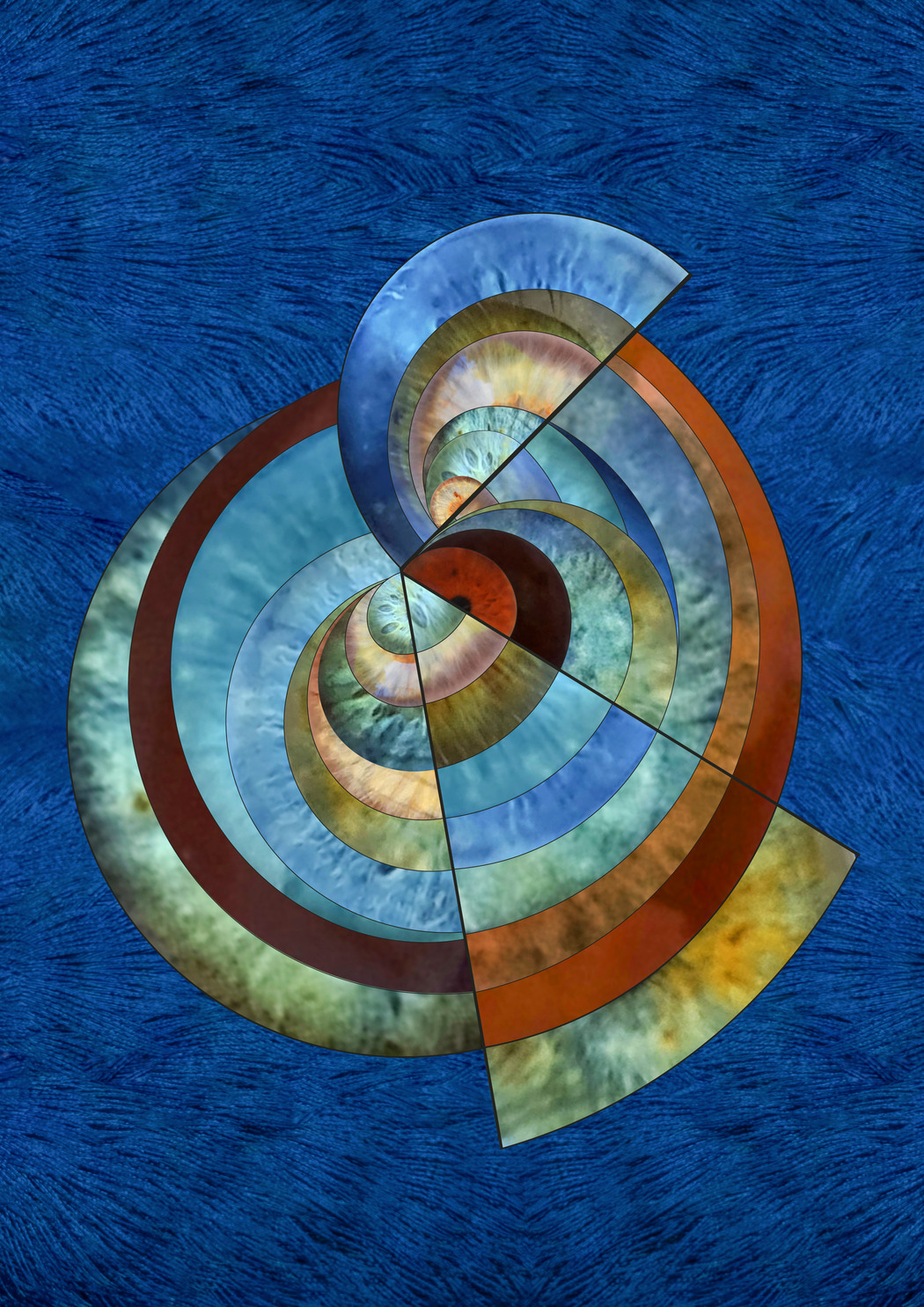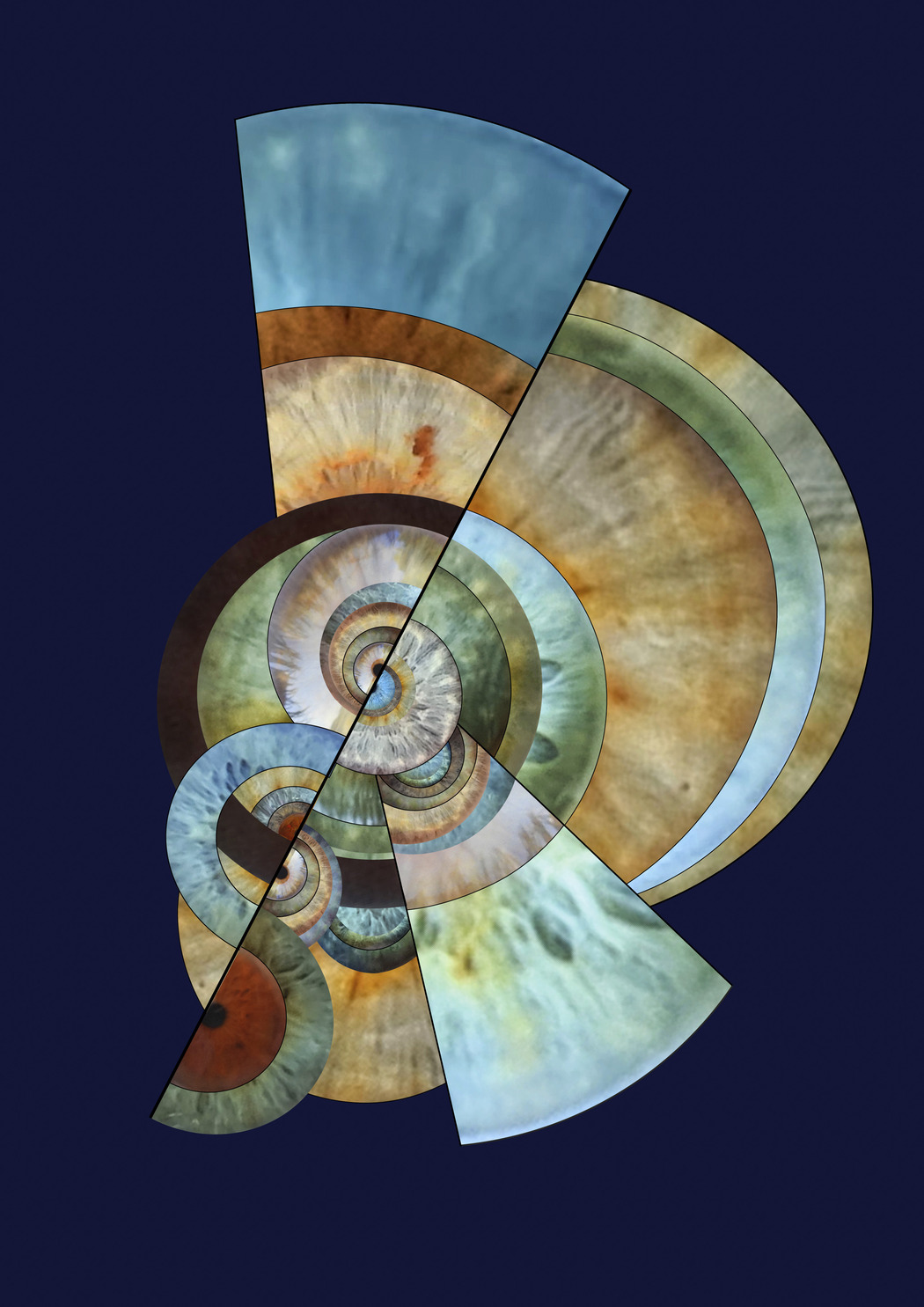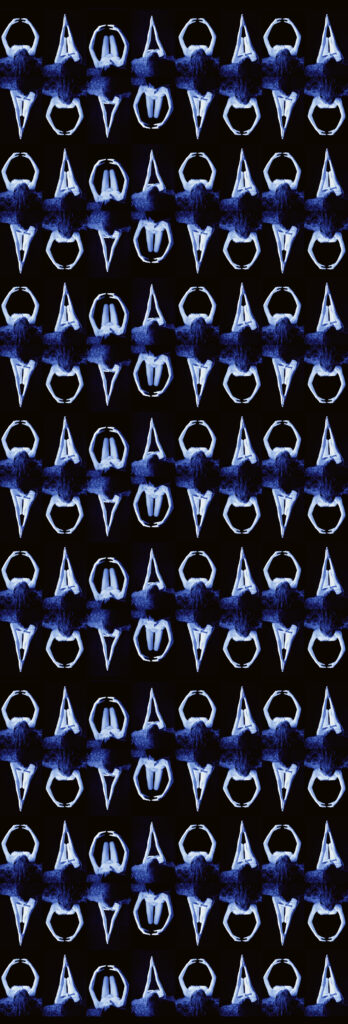Keren
Website
Your work often explores the duality between close-up and distant perceptions. Could you elaborate on how you approach this contrast in your creative process?
My work indeed plays with perception. One question arises: What do we see when we look? From a distance, we see abstractions, but as we approach, a more figurative reality emerges, creating a reinterpretation of the image. The forms transform into human, vegetal, or organic figures. So there is a duality between what we think we see and what we discover when we get closer. Isn’t this like our own existence? We shape our understanding of the world through apparent certainties that often fade away once we take the time to observe and delve deeper. What we thought was reality sometimes turns out not to be. My work is an inquiry into perception, questioning our own beliefs and confronting us with our existential uncertainty. Keren | 5-2bleu
Keren | 5-2bleu
How do you decide when to use abstract forms versus precise, detailed representations in your works?
My work is primarily autobiographical. I don’t consciously decide to use abstract forms or precise representations; it imposes itself on me depending on what I feel at any given moment. So, emotions, memories, and perceptions guide me.In your “Géométrie des corps” series, you investigate the geometry of the body. What inspired this exploration, and how do you think it challenges traditional representations of the human form?
This series is autobiographical. I question the interpretation of the body by detaching it from its organic aspect. I deconstruct it, fragment it, and reassemble it to create a new language. The body becomes a letter. A sign. These signs are complementary and create geometric shapes. A new construction, a fresh start for a new chapter in life. I explore geometry to find a visual language. The desire to deconstruct the usual perception of the body and rethink it as an entity in itself. So at first, there is the woman, then the man, and then they combine and interact, transform, and recombine. This challenges the representation of the body by dissociating it and playing with the boundary between figuration and abstraction. By fragmenting, repeating, and associating the forms, I seek a language where the body breaks free from its boundaries to create new geometries. The fragments follow each other, and the difference lies upstream, in the couple that precedes the image but also in what follows beyond the image.Your exhibitions have spanned various locations such as Paris, Ashdod, and Miami. How does the cultural context of each city influence your work or how it’s received by audiences?
Wherever we travel, we end up with ourselves. Keren | 7-1bleu
Keren | 7-1bleu


Leave a Reply